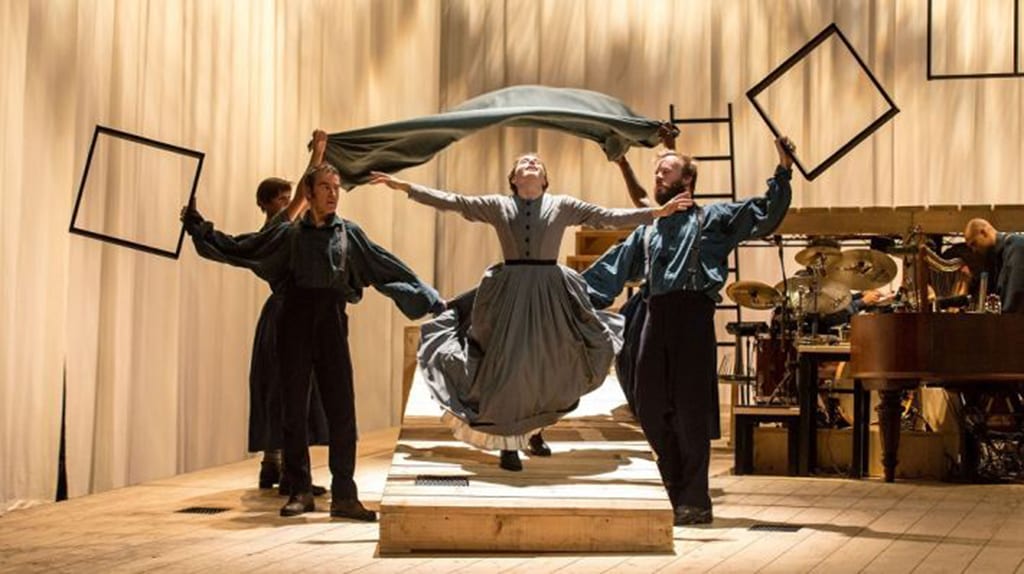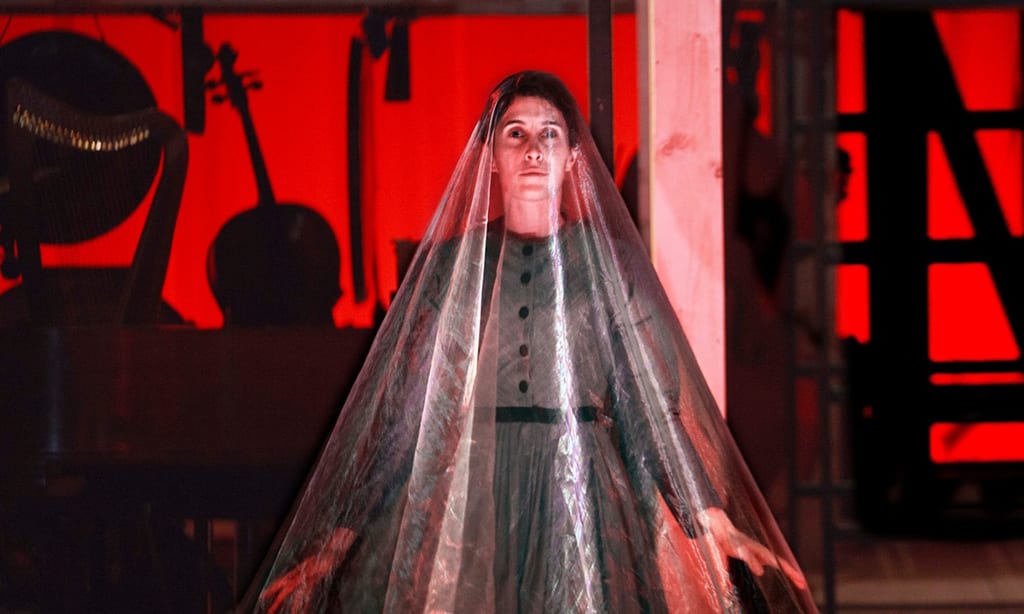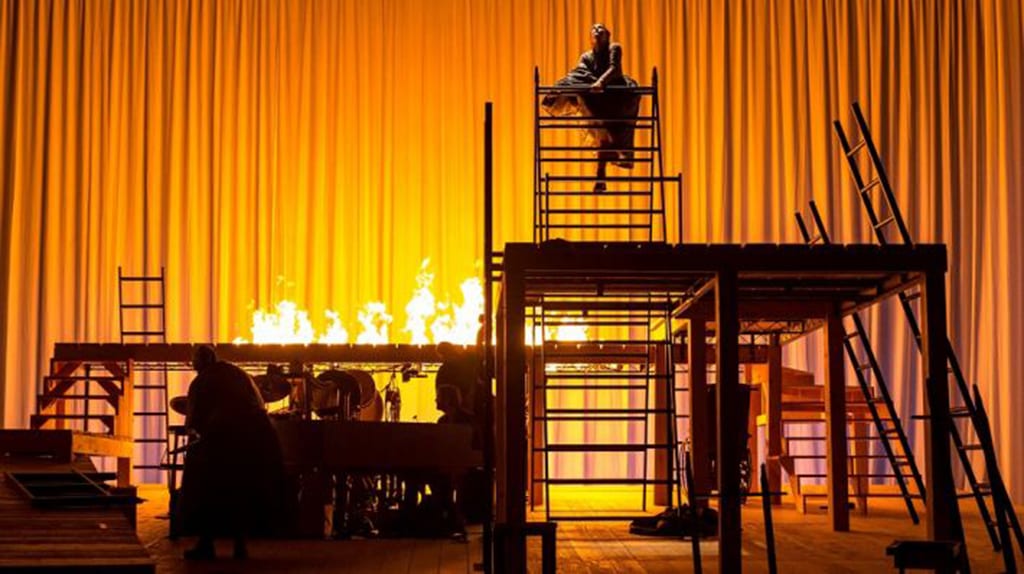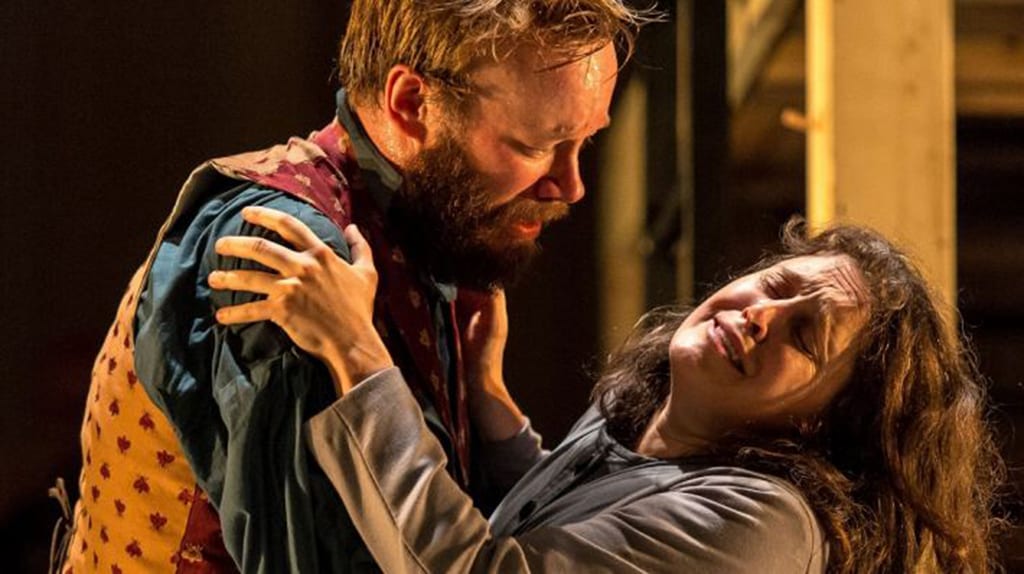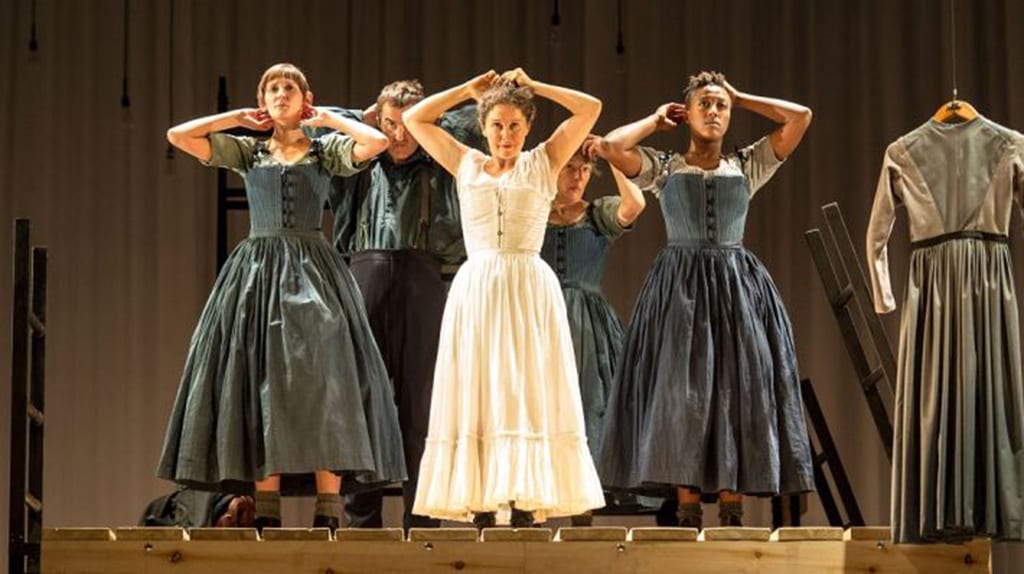The defining aspect of Cookson’s production of Jane Eyre is fluidity: the set consists of wooden platforms, staircases, and white drapes, creating an ambiguous landscape for the audience to fill with their own ideas of Jane’s surroundings. The cast all (with the exception of Hayes, Marshall and Worrall) play multiple characters, signifying switches between them with small changes of costume – the production demands our investment, as our imagination is required to bring the play to life. The lack of scenery means that transitions are virtually non-existent, as actors move slickly from one scene to another, giving a sense of coherence to the play. For such a long novel to be transformed for the stage, much must necessarily be cut; but the play, made up of small moments strung together, rather than big scenes, manages to retain the essential character of Bronte’s story.
Clocking in at just over three hours, there is a danger that the play is simply too long to work – however, in spite of its length, it does succeed, as the bite-sized moments that make up the story allow us to digest it a little at a time. Every so often, these sequences are broken by a longer scene, and these contrasts are what keeps the play moving. The supporting cast is fantastic – especially Edwards and Elphinstone as Mr Brocklehurst/Mr Mason/Pilot (Rochester’s dog) and Helen Burns/Adèle/St. John respectively. The actors all acquit themselves very well when it comes to changing characters, and manage to pull off a complete range of emotions.
The only actors who do not double up are Worrall and Hayes, for obvious reasons, and Marshall, who is also the main singer – this means that she is present onstage at all times, even when not in character, a silent reminder of Bertha’s existence. Although Bertha has no lines to speak of, this dual role also means that Marshall, can express some of Bertha’s feelings in her songs, fleshing out the character without directly altering her role. Marshall’s constant presence also helps to underscore the similarities between Jane and Bertha, who is always in the background of Jane and Rochester’s scenes together.
Since this is quite a minimalist production, the actors have to find ways to express what is happening without props or scenery – for example, coach journeys are indicated by a group of actors running on the spot at the same time. Sometimes, this works well – as at Jane’s first night at Lowood, when she is bombarded from all sides by staff, but at other times these are slightly confusing or take us out of the story. On the whole, however, the production is a success. Jane Eyre is an incredibly ambitious book to take on, containing as it does so many threads to be woven together, but the play can be enjoyed by fans of the novel and newcomers alike.

